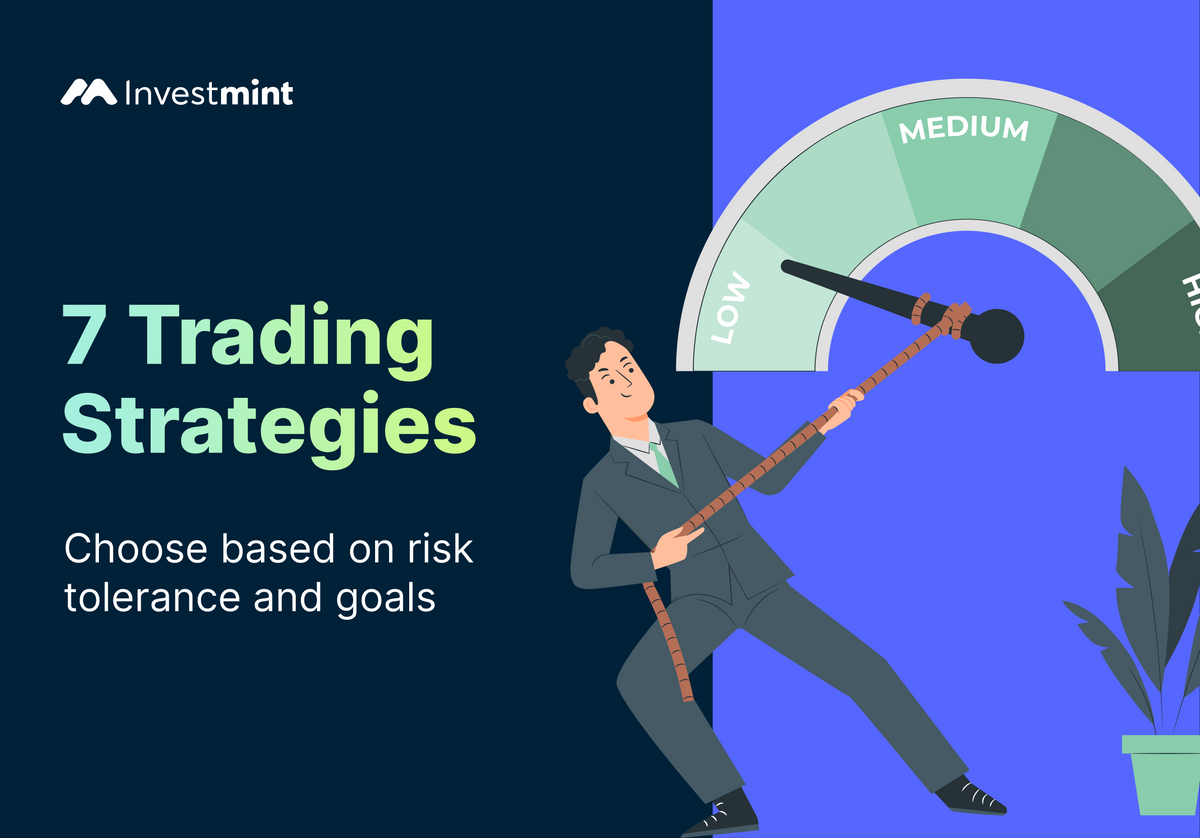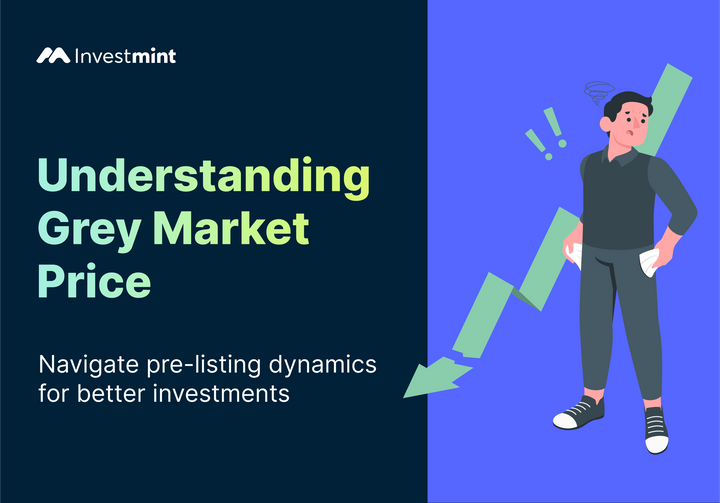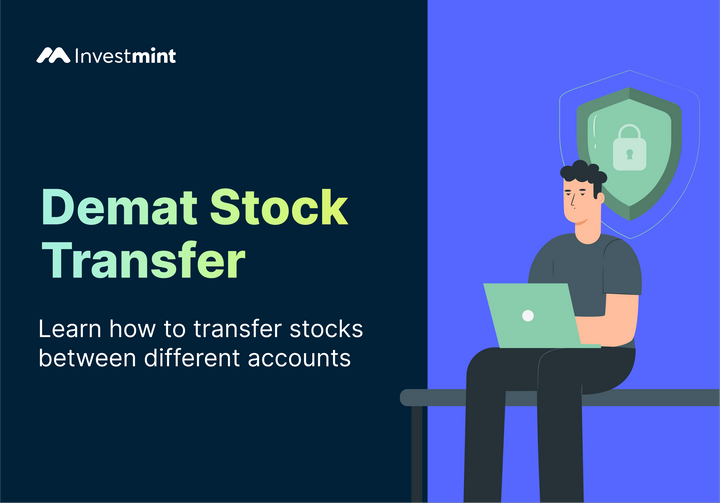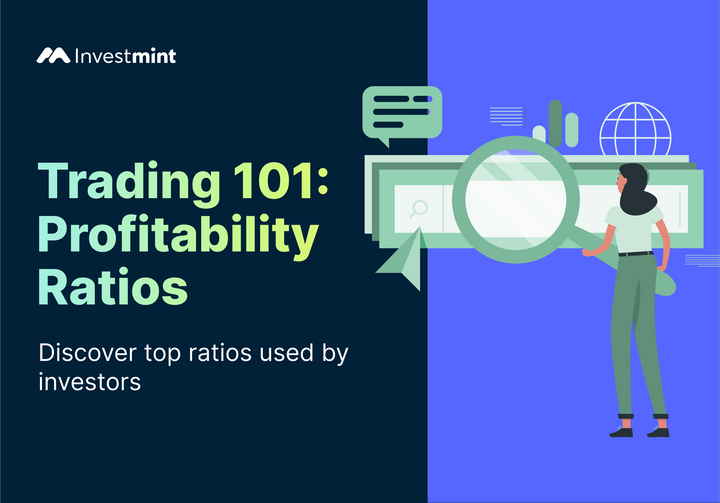Trading Strategies: A Comprehensive Guide
Dive into financial markets—discover trading strategies like day trading, swing trading, scalping, and more. Choose wisely based on goals and risk tolerance.

Introduction
Trading in the financial markets can be a thrilling and potentially lucrative endeavour. However, it's important to remember that trading also carries significant risks. That's why you must have a solid trading strategy in place. A trading strategy can help you minimise your risks and maximise your potential returns by providing a clear set of rules and guidelines to follow when making trading decisions.
Trading Strategy Vs Trading Style
It's worth noting that there is a difference between trading strategies and trading styles. Trading style refers to how you approach the markets, including your activity level, time frame, and risk tolerance. Trading strategy, on the other hand, refers to the specific rules and techniques used to enter and exit trades. While trading style can influence the choice of trading strategy, it's important to distinguish between the two.
So, we can classify a trader as a scalper, day trader, swing trader, and position trader while classifying the method of trading as a strategy. We have a lot of articles on these popular trading styles. In this article, we will focus on the trading strategies used by these traders.
What Is A Trading Strategy?
A trading strategy is a set of rules and guidelines that a trader uses to make trading decisions. Trading strategies are based on various factors, including fundamental analysis (which looks at the underlying economic and financial factors that affect an asset's value) and technical analysis (which looks at patterns and trends in price charts). Some of the most popular trading strategies include:
Buy and Hold
The buy-and-hold strategy is one of the most straightforward trading strategies. It involves buying a stock or other asset and holding onto it for long, often years or even decades. This strategy is popular among investors who believe the market will trend upward over time and are willing to wait for their investments to grow. This strategy can also be referred to as long trading or passive style-based trading. We have written an article on that, which you can check here.
Day Trading
Day trading is a more active strategy involving buying and selling stocks or other assets within the same trading day. Day traders (trading style) often use technical analysis to identify short-term trends and patterns in the market, and they may use leverage to amplify their gains (and losses).
You could also significantly leverage your trade on the recent news/financials of the industries/market, which can help you conduct a profitable trade. We have already written an in-depth article on Intraday Trading and buy today and sell tomorrow trading strategies. You can check it out here.
Swing Trading
Swing trading is a trading style that involves holding positions for several days to several weeks. Swing traders aim to profit from medium-term price movements, often using a combination of technical and fundamental analysis to identify trading opportunities. They typically use lower leverage than day traders, as they are less concerned with short-term price fluctuations.
Even though Swing trading falls under active trading like day trading, it can be less stressful than day trading and may be a good option for traders who don't have the time to monitor their positions closely.
Scalping
Scalping is an ultra-high frequency trading style where traders aim to make profits from small price movements in security by entering and exiting trades quickly. Scalpers hold their positions for a very short period, often just seconds or minutes, and typically use high leverage and large position sizes to generate significant returns from small price movements. Scalping is a high-risk, high-reward trading style that requires precision timing and strict risk management.
In scalping, suppose you purchase 10,000 stocks worth 10Rs, leading to a total investment value of 1,00,000Rs. Even by keeping the target price of 11Rs, you would be at a profit of 10,000Rs. However, this strategy carries significant risks. Even when the stock falls 2Rs, you will be at a possible loss of 20,000Rs. Hence, a good, well-thought-out stop loss must be chosen to limit the losses.
Position Trading
Position trading is a trading style where traders hold positions for weeks to months or even years. Position traders aim to profit from long-term price movements and typically use fundamental analysis to identify undervalued assets with strong long-term growth potential.
They use lower leverage than both day traders and swing traders, as they are less concerned with short-term price movements. Position trading requires a lot of patience and a long-term outlook but can be very profitable for traders who are willing to wait for the right opportunities.
Momentum Trading
Momentum trading is a trading style where traders aim to profit from the continuation of a trend in a security price. Momentum traders look for stocks that are already moving in a particular direction, either up or down, and enter trades with the expectation that the trend will continue.
This style of trading typically involves using technical analysis (like moving averages) to identify trends and can be very profitable if executed correctly. However, momentum trading can be risky as it relies heavily on market timing and can result in significant losses if the trend reverses unexpectedly. This article has mentioned all the pros and cons of momentum trading.
Algorithmic Trading
Algorithmic trading is a trading style that uses computer algorithms to analyse market data and execute trades automatically. Algorithmic traders typically use a combination of technical and quantitative analysis to identify trading opportunities.
A basic example of the above could be studying the historical market behaviours after the action of catalysts like interest hikes, job decline, recession, etc. They use advanced mathematical models to predict market movements and execute trades at lightning-fast speeds.
Algorithmic trading is popular among institutional traders and hedge funds and is reliant on specially-made automatic trading software. Algorithmic trading can be highly profitable but requires a high degree of technical skill and expertise.
Which Trading Strategy Is Right For You?
Choosing the right trading strategy can be challenging and daunting for new and experienced traders. However, it is a crucial step to take if you want to succeed in the financial markets.
One of the most important things to remember is that there is no one-size-fits-all approach to trading. The best trading strategy for you will depend on a variety of factors, including your investment goals, risk tolerance, and trading style.
- Time-Frame of Trading
The first factor to consider when choosing a trading strategy is your preferred time frame. Are you looking to make short-term trades that last minutes, hours, or days? Or are you more interested in long-term trades that can last for months or even years? Short-term trading strategies like scalping and day trading require traders to be very active and make quick decisions, while longer-term trading strategies like swing trading and position trading allow traders to take a more relaxed approach.
- Risk Tolerance
Another important factor to consider is your risk tolerance. How much risk are you willing to take on? Trading strategies like scalping and day trading can be high-risk, high-reward approaches that require traders to be able to handle significant losses. On the other hand, longer-term trading strategies like position trading may be lower-risk, lower-reward approaches that are better suited for more risk-averse traders.
- Trading Styles
Your trading style is also an important consideration. Are you more comfortable with an active trading approach, where you are constantly monitoring the markets and making quick decisions? Or do you prefer a passive trading approach, where you set up your trades and let them run for longer periods? Different trading styles require different skill sets and mindsets, so choosing a strategy that aligns with your natural strengths is important.
- Asset Class Of Choice
The asset class you are interested in trading is also an important consideration. Are you interested in trading stocks, forex, or commodities? Each asset class has its unique characteristics and requires different trading strategies.
- Prevailing Market Conditions
Finally, it's important to consider the current state of the markets and which strategies are best suited for those conditions. For example, during periods of high volatility, short-term trading strategies may be more effective, while during periods of low volatility, longer-term trading strategies may be more appropriate.
Conclusion
Choosing the right trading strategy is essential for any trader who wants to be successful in the financial markets. By carefully considering your personal goals, risk tolerance, and trading style, you can choose the trading strategy that's right for you and improve your chances of success. Remember, there are a variety of trading strategies to choose from, each with its own advantages and risks, so take the time to do your research and find the strategy that works best for you.
Investmint app brings you the latest stock market updates. Ensure you capture today's opportunities by tapping below.



